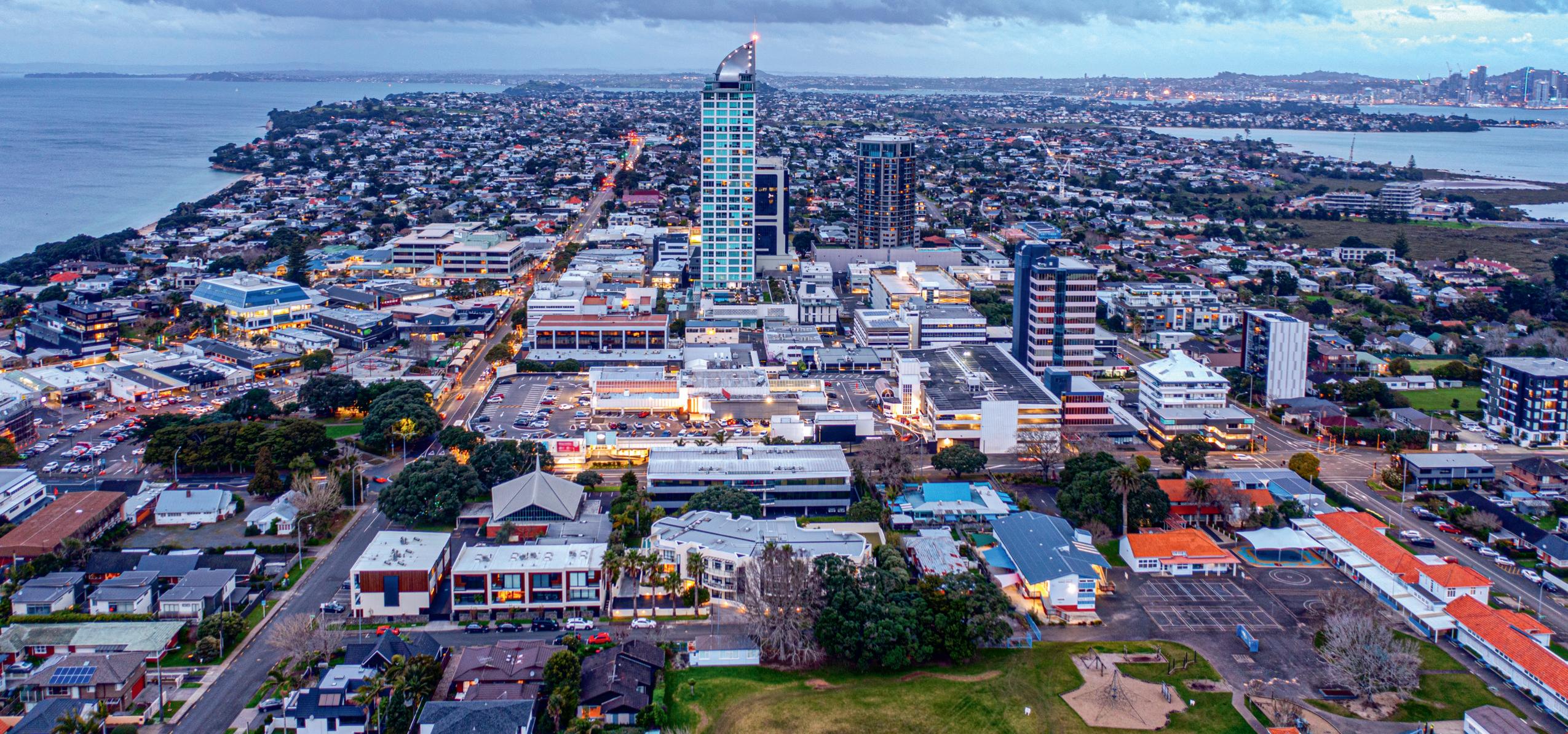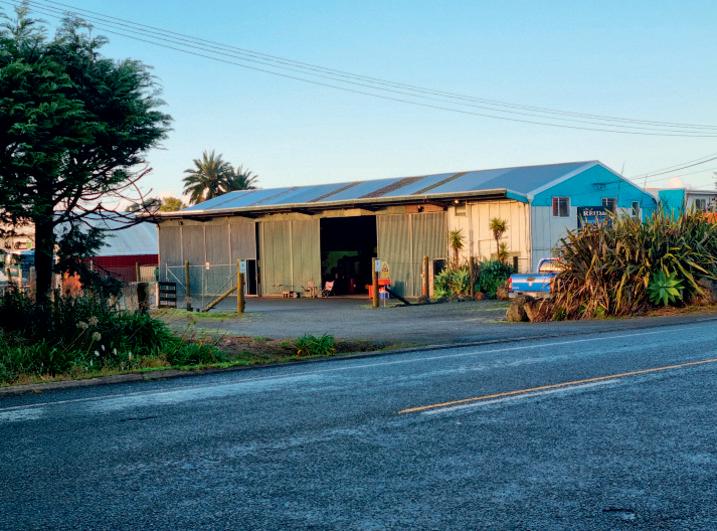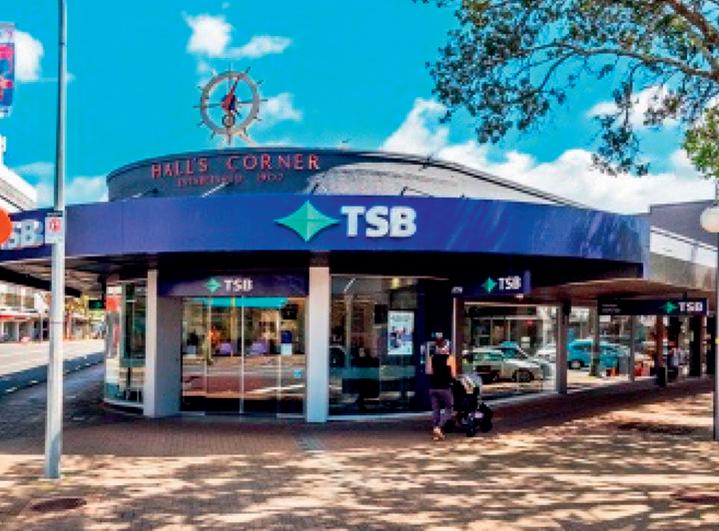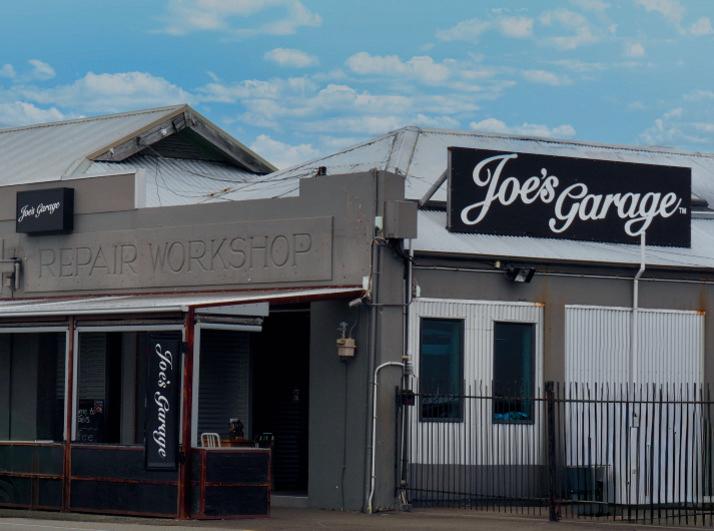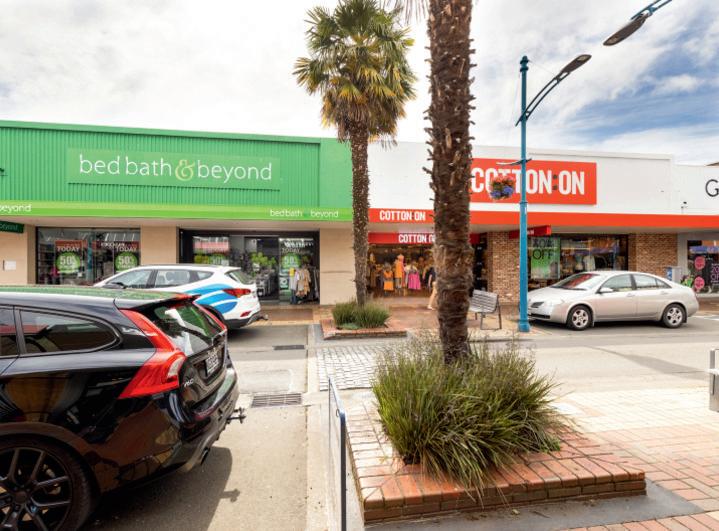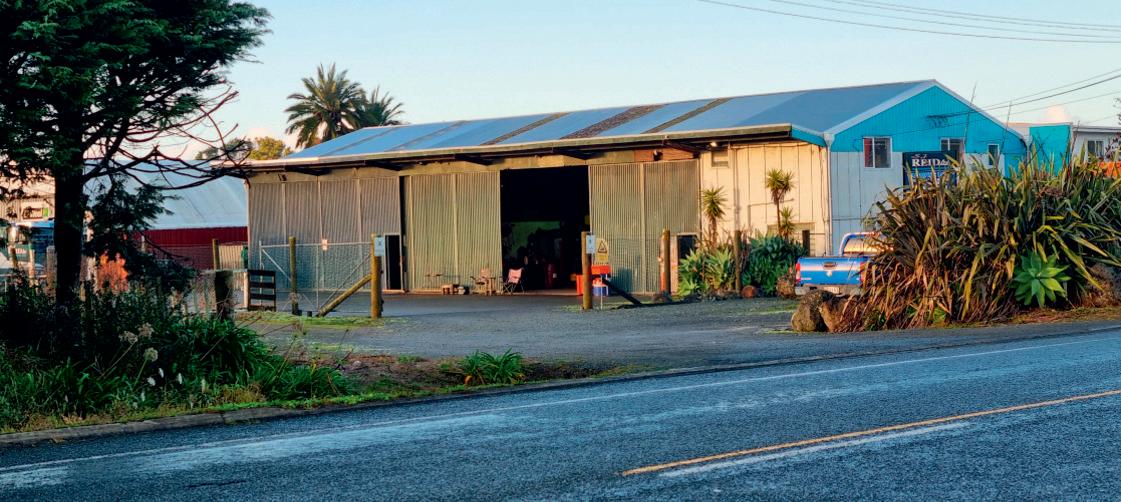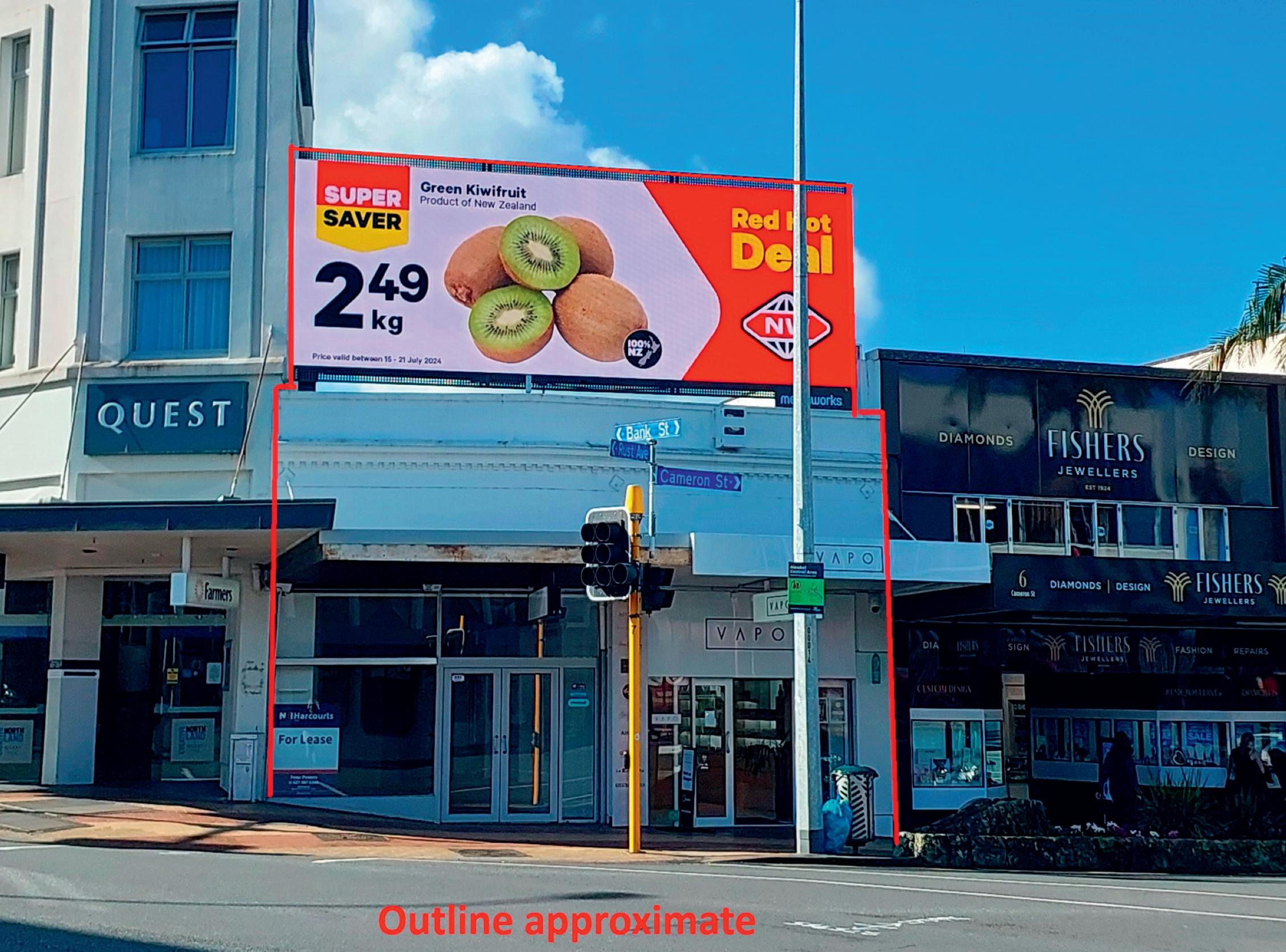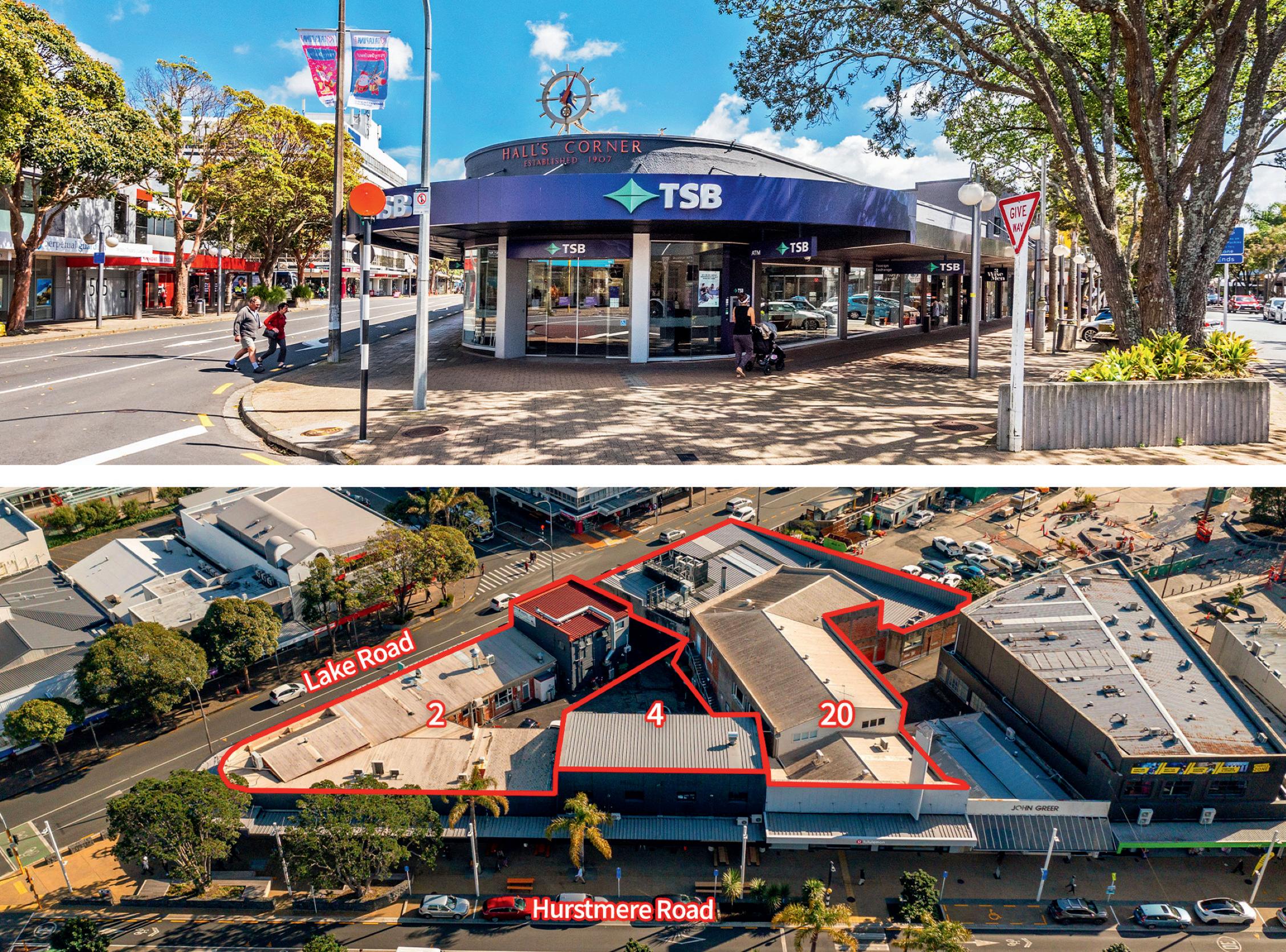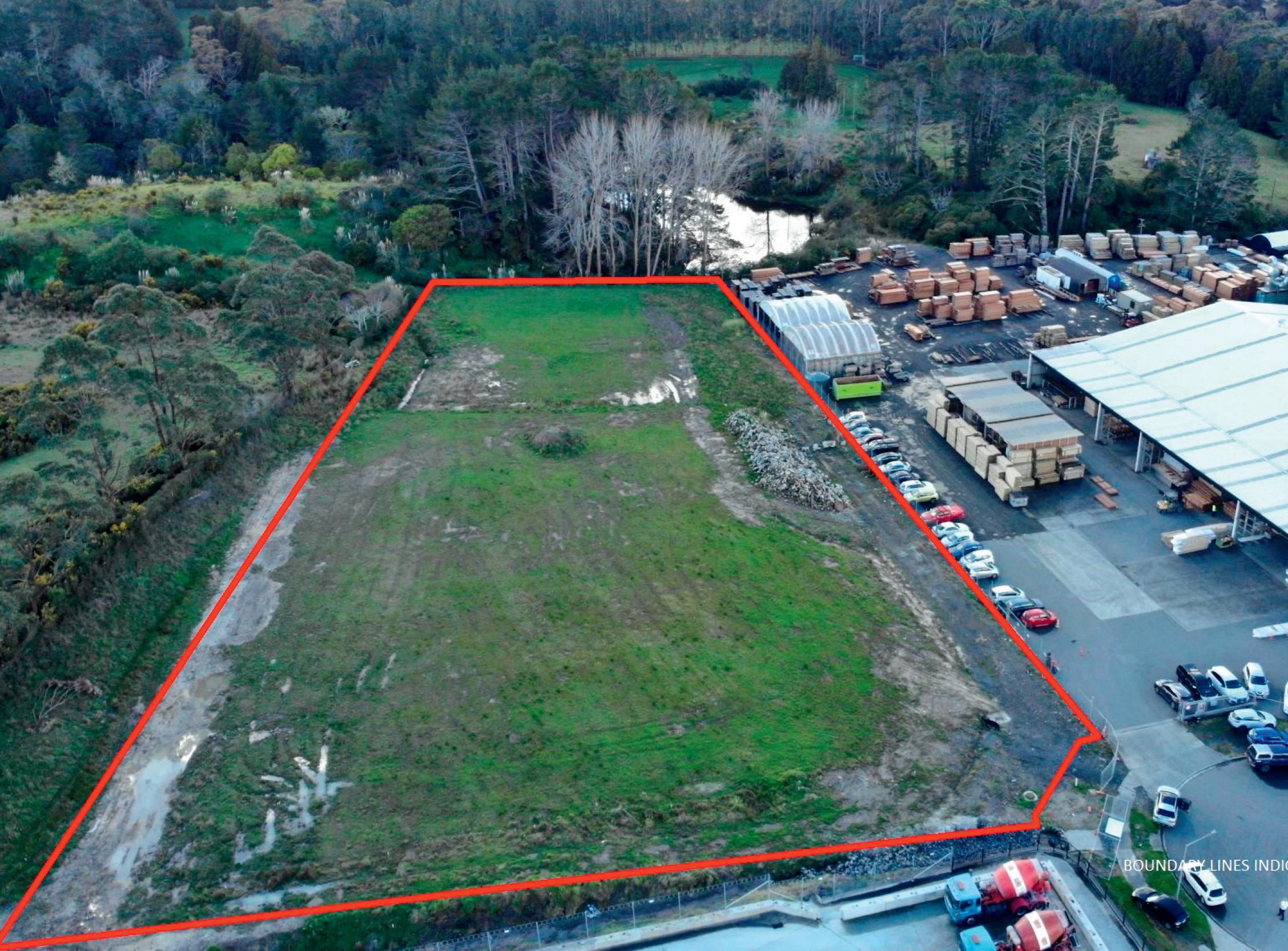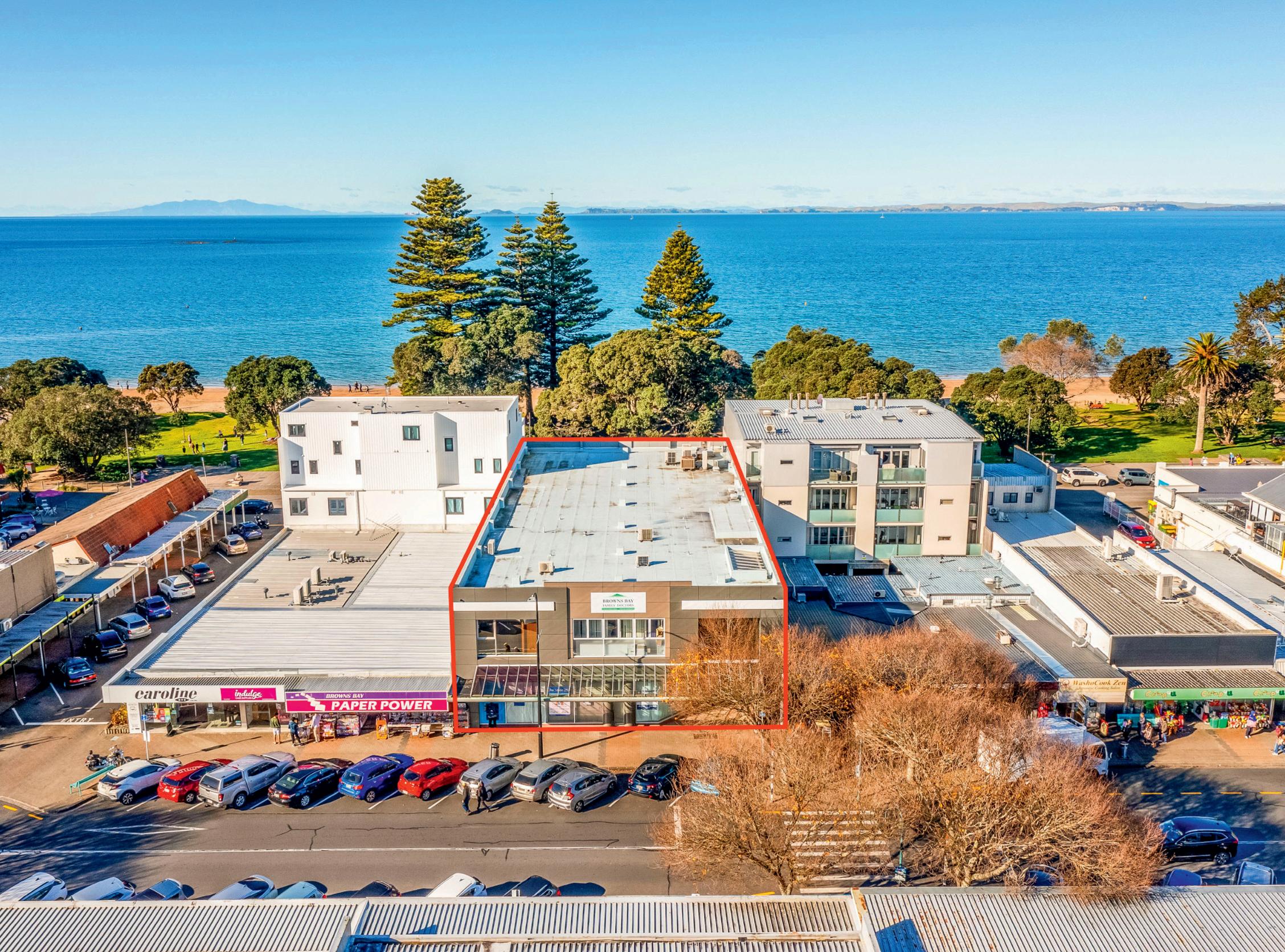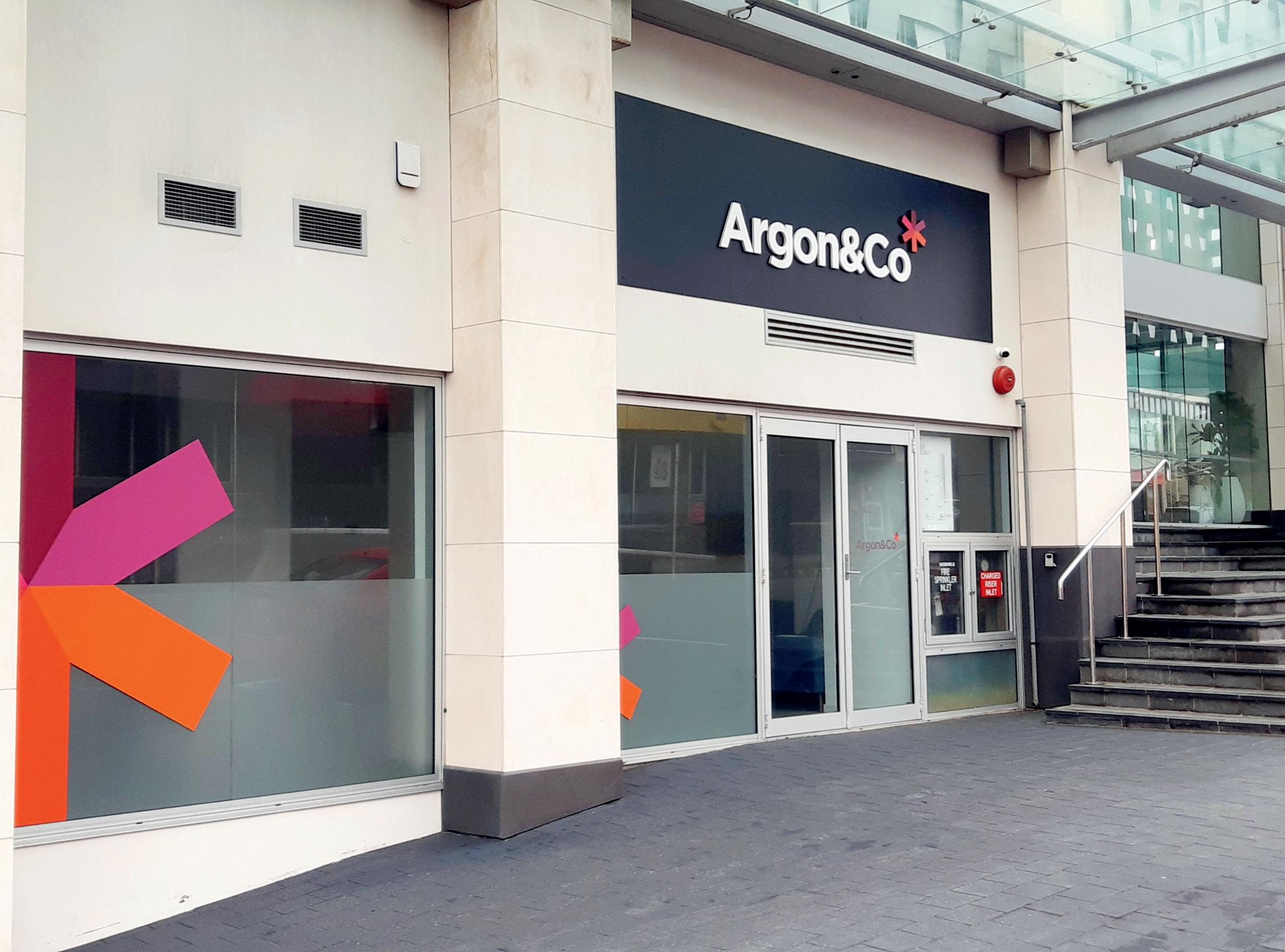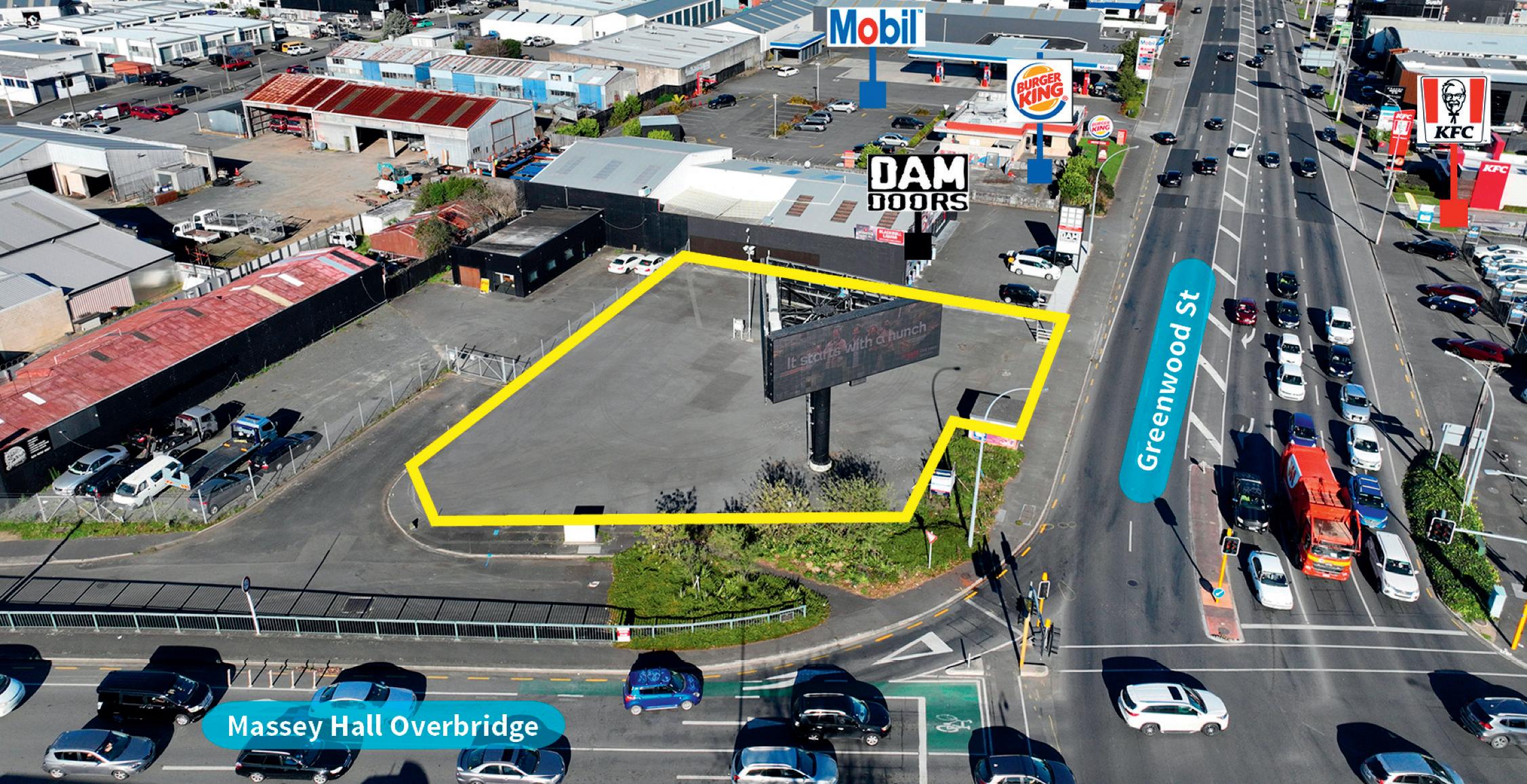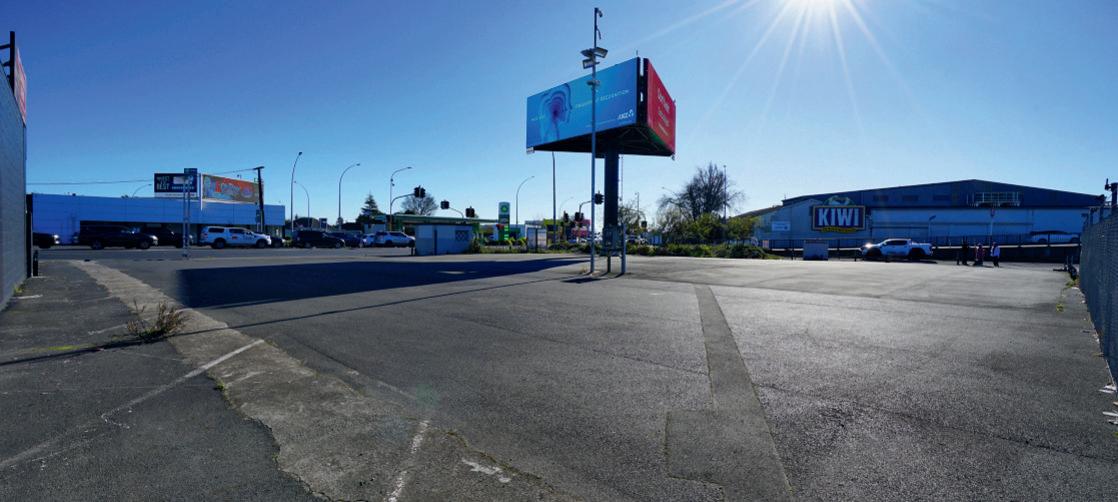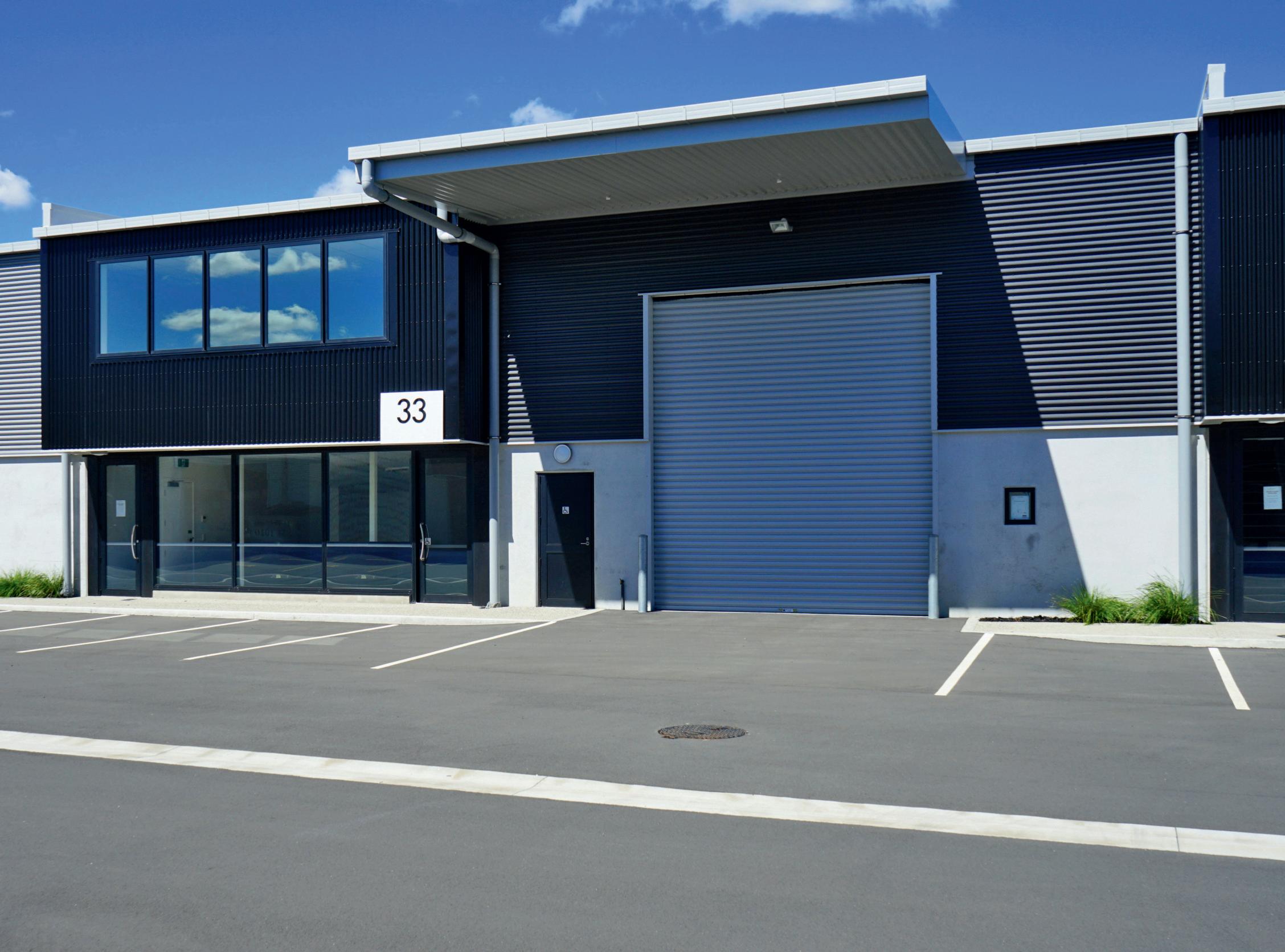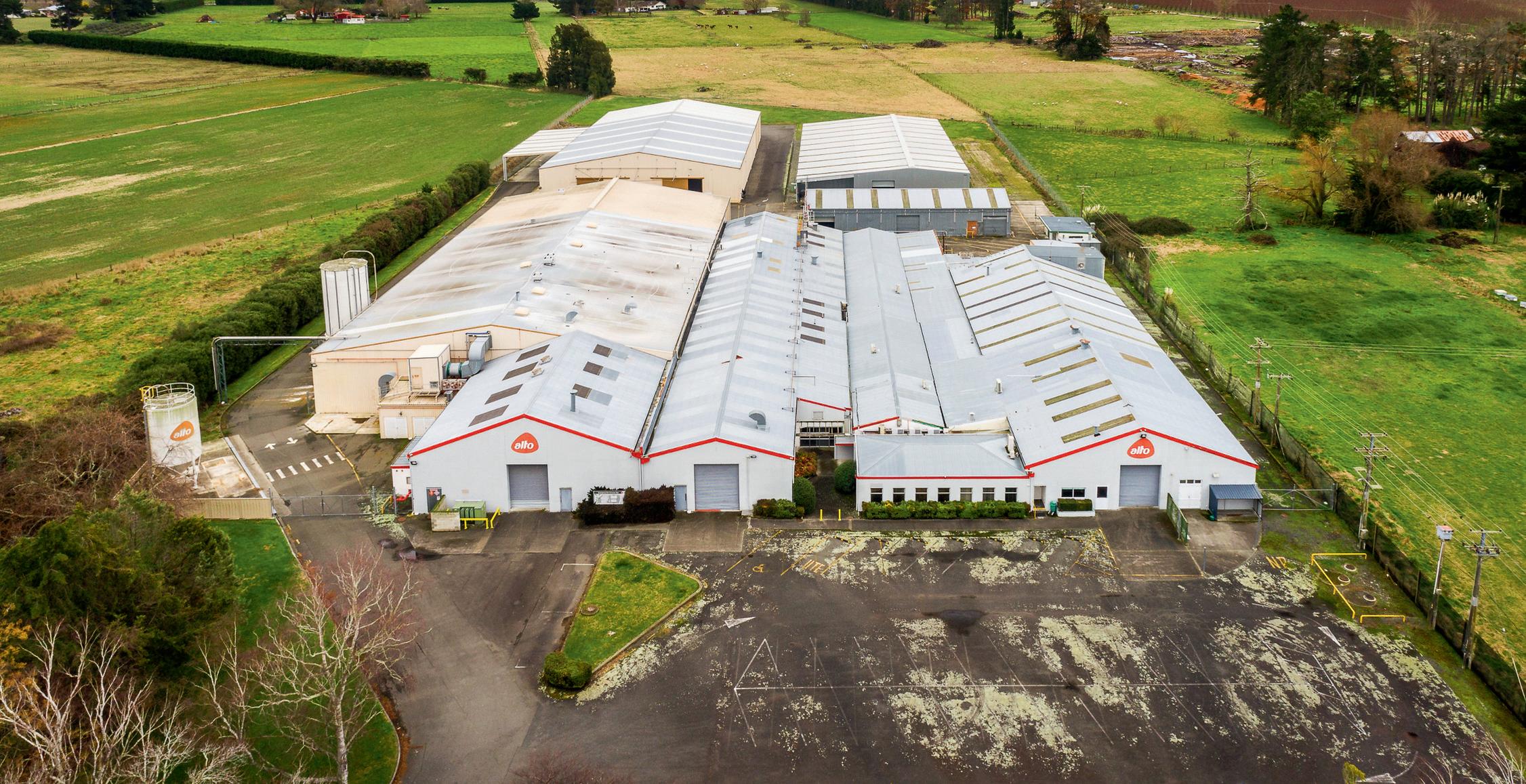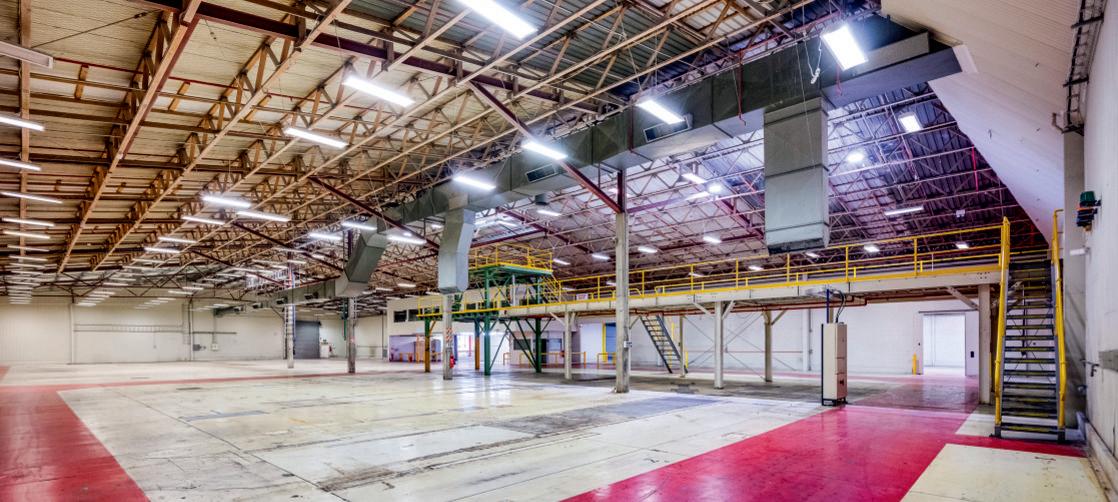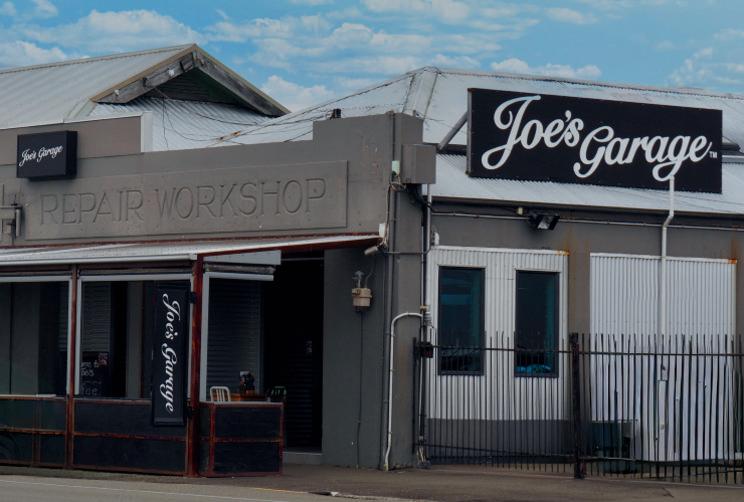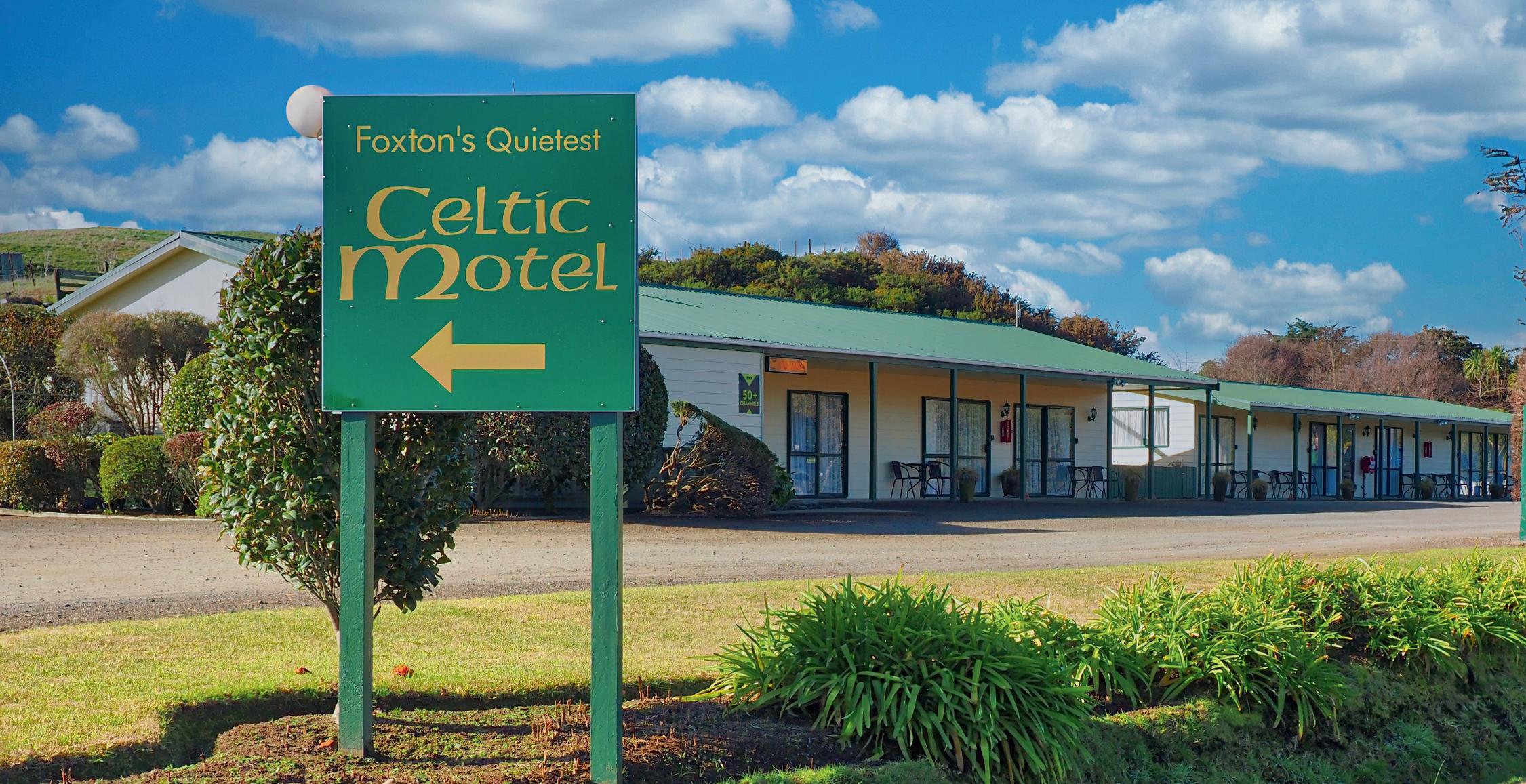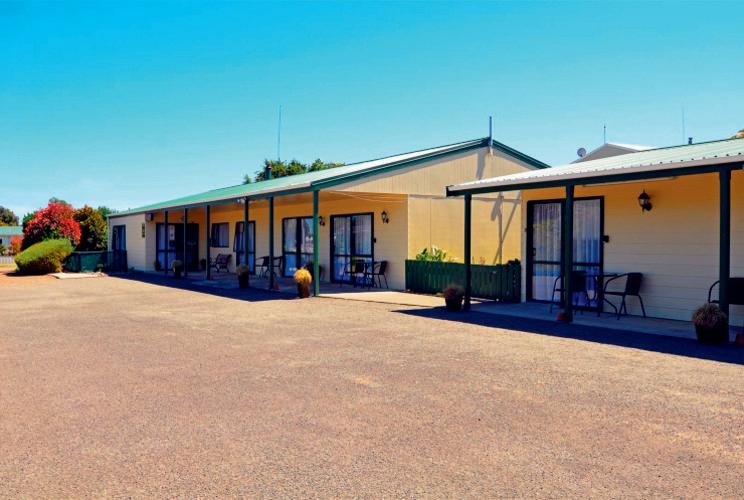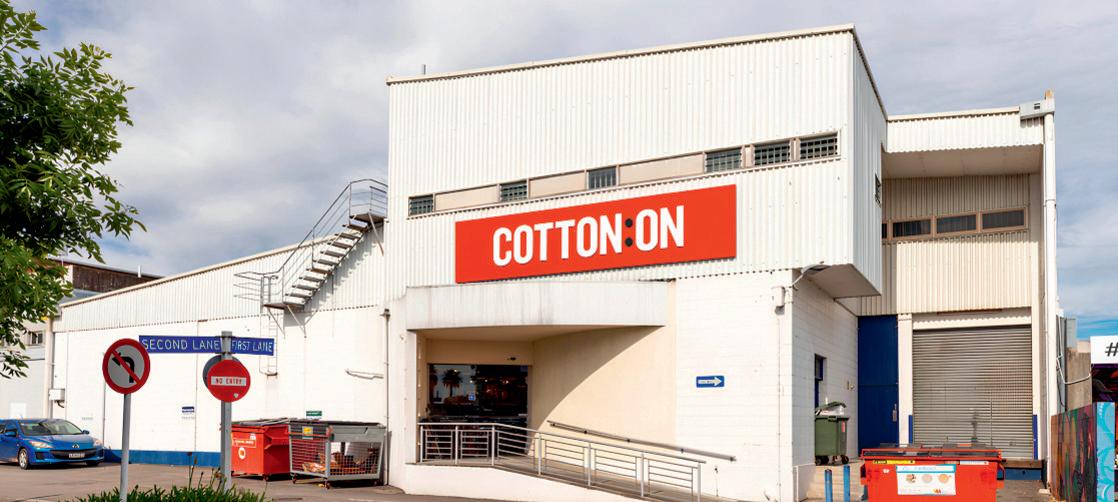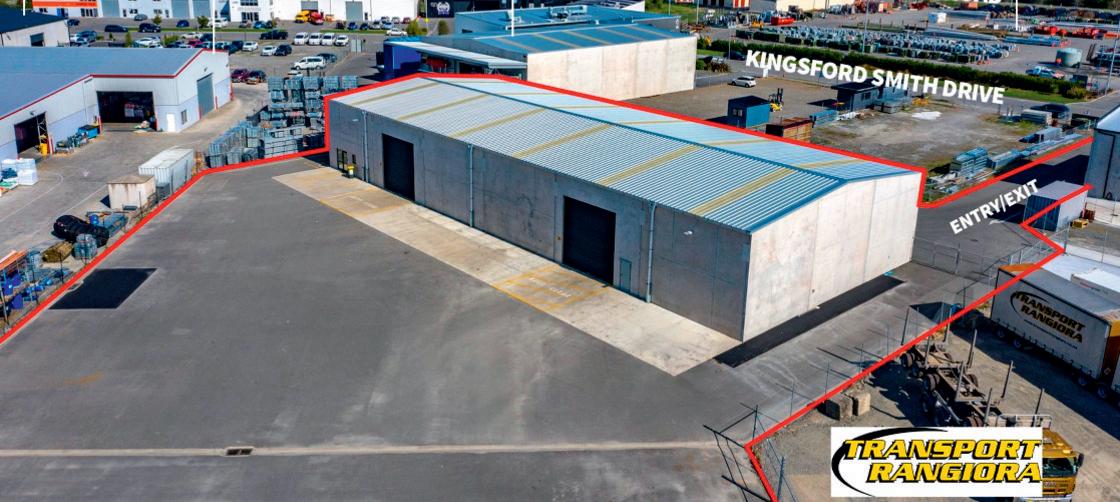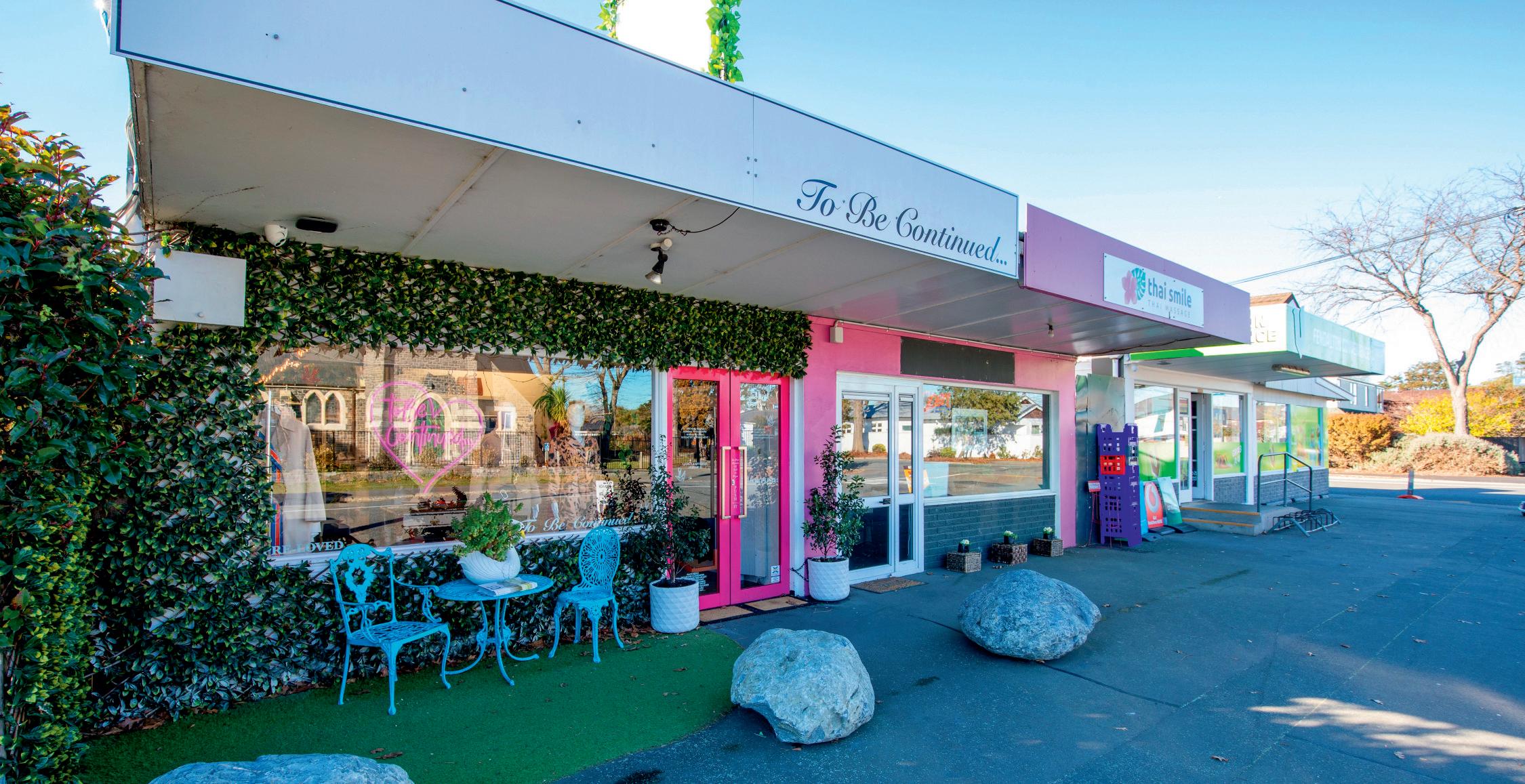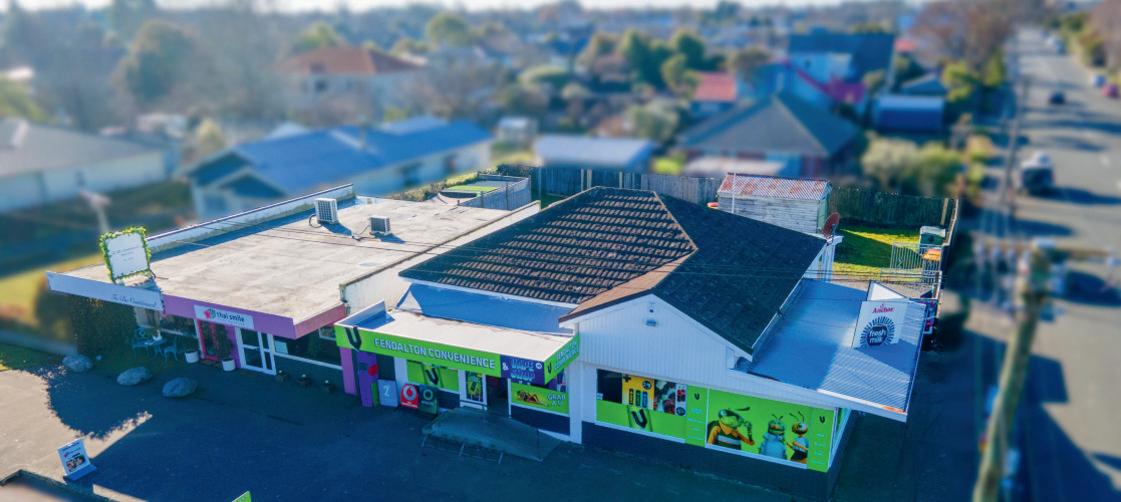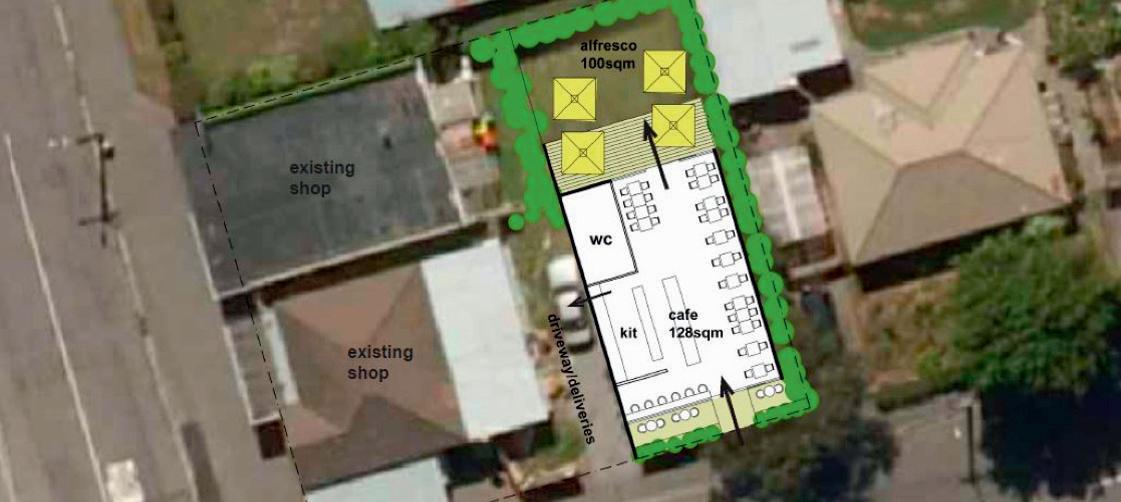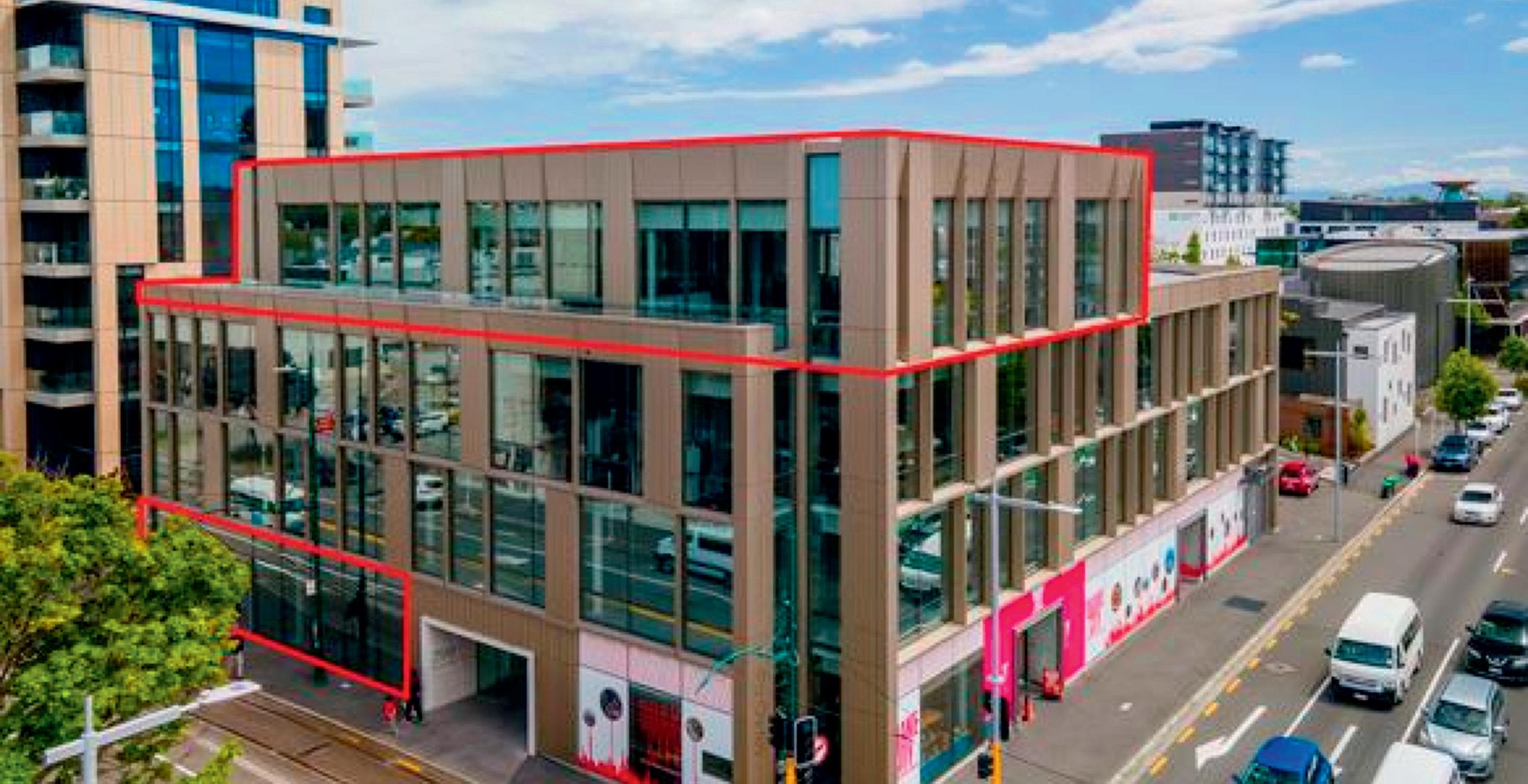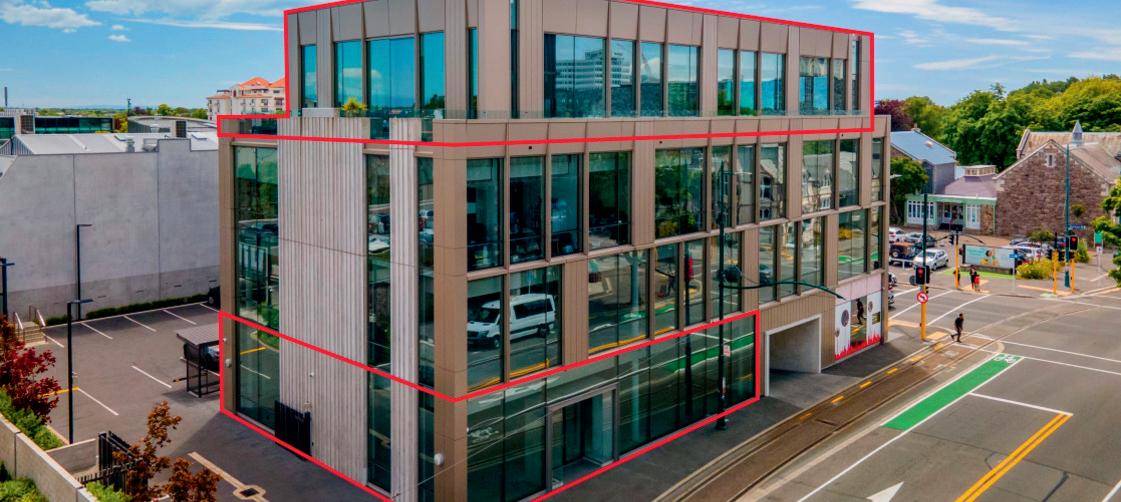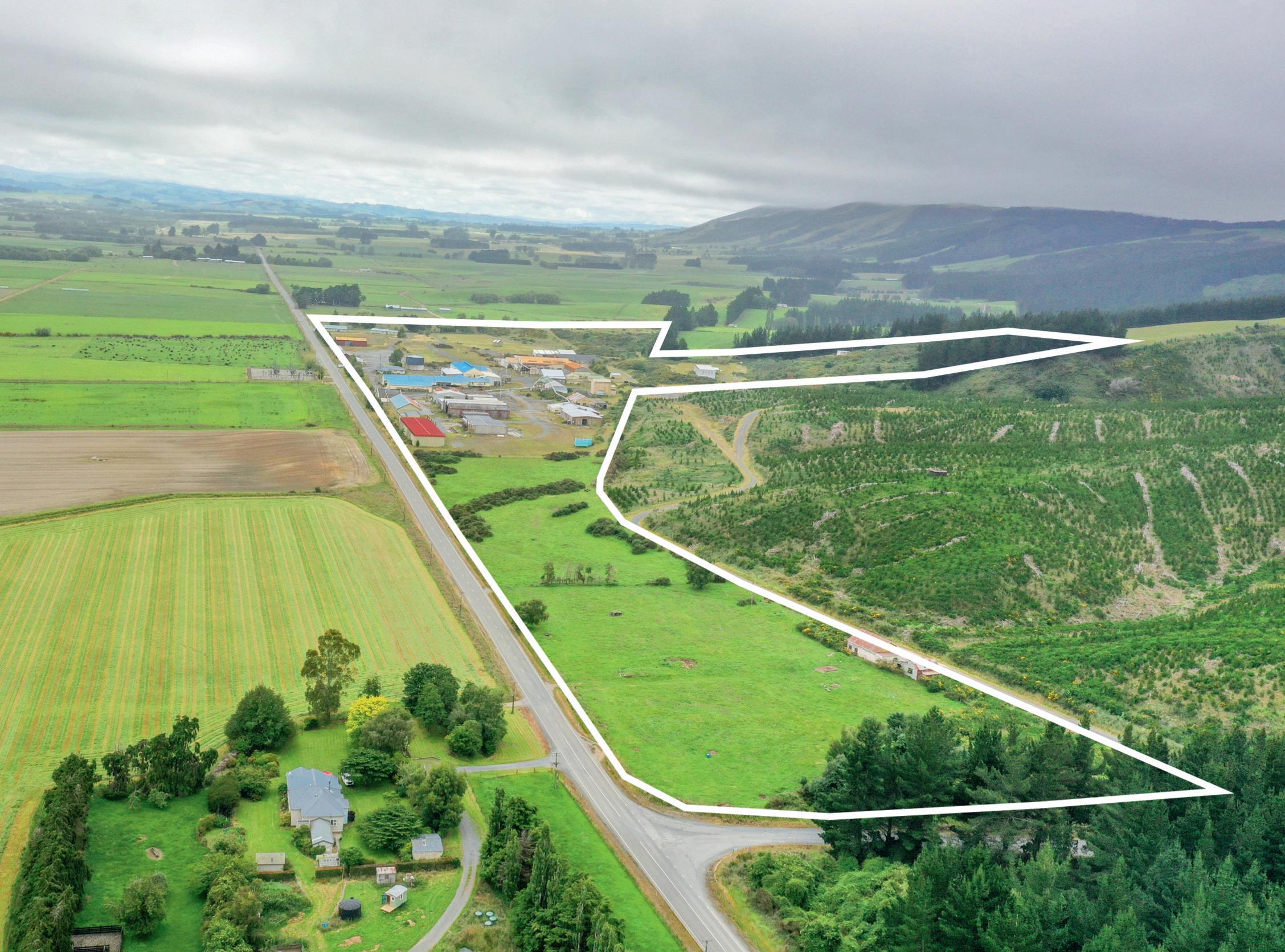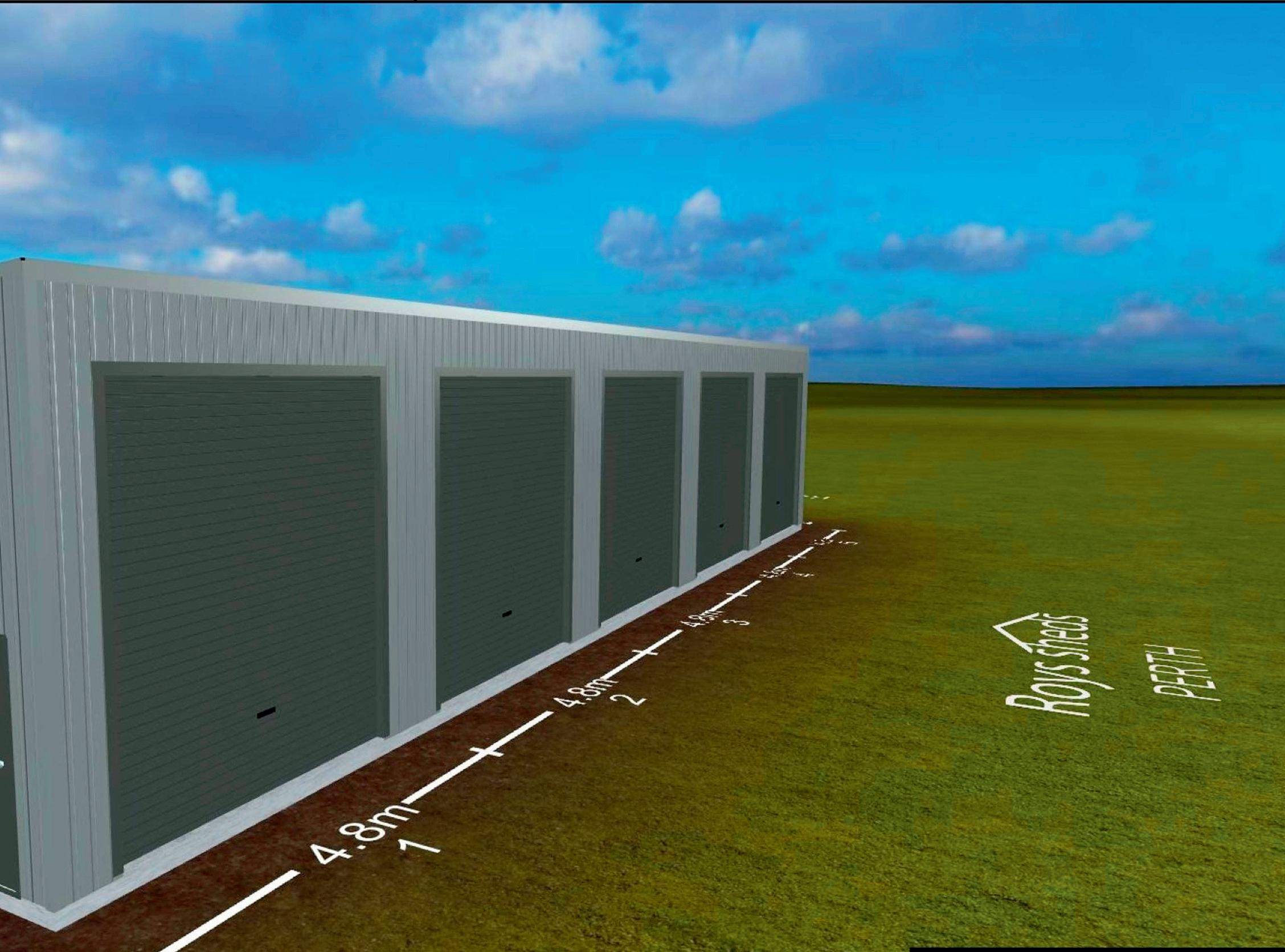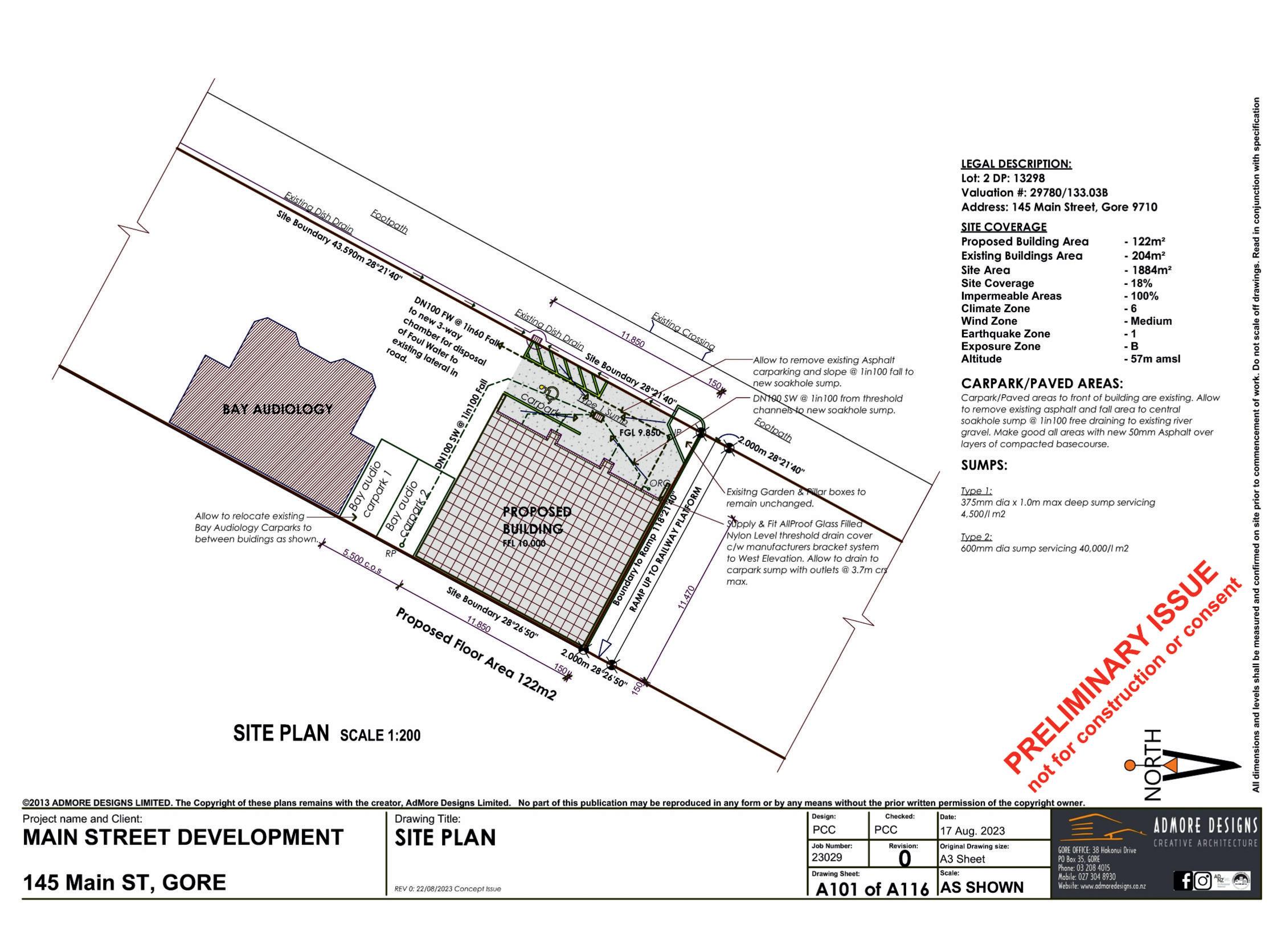KEYASSETS











Welcome to the Winter 2024 edition of the NAI Harcourts Key Assets eBook.
As we approach spring, optimism for busier times ahead is on the horizon. The commercial property market in New Zealand during 2024 has been experiencing the challenges of a higher interest rate environment, just like our economy overall, despite this significant transactions have continued albeit more difficult to achieve in some sectors.
Within our network, we observe that while sectors like industrial thrive, traditional office spaces are undergoing significant evolution. The commercial real estate landscape in New Zealand remains resilient and adaptable amidst ongoing uncertainties, which are likely to persist into the future.
We acknowledge the challenges faced in global office markets due to high interest rates and remote working trends. However, the New Zealand market shows resilience, especially evident in Auckland, Wellington, and Christchurch, where recovery varies but positive trends are visible. As you’ll no doubt have heard, despite economic challenges, New Zealand workers have returned to offices ahead of global counterparts, driven by collaboration needs and networking opportunities.
Looking ahead, properties with high-quality tenants and sustainable features are expected to be highly

sought after, particularly in the industrial and strategically positioned office sectors.
Although stable interest rates have renewed interest in property acquisition, concerns linger about borrowing costs and competition from alternative investments.
In summary we can say, it’s evident all around us that there are indeed recessionary pressures and job cuts but for the most, New Zealand’s commercial property industry remains relatively stable, with lower exposure and risks compared to international markets.
This edition of our eBook showcases a diverse range of commercial properties available across New Zealand, along with opportunities to acquire businesses. We aim to simplify your search for the latest commercial prospects nationwide.
We appreciate the positive feedback from our previous edition and trust that this one will prove equally valuable to you. For enquiries or further information on any listings featured in this eBook or beyond, our knowledgeable NAI Harcourts sales consultants are available to assist you promptly.
Warm regards,
Bryan Thomson Managing Director Harcourts New Zealand




Managing Director Clarity Insurance Brokers
A Commercial Rebuild Valuation is the only way to ensure an accurate sum insured for your commercial property insurance policy. Therefore, commercial building owners have come to rely upon valuations produced for insurance purposes as an accurate way of setting a replacement sum insured.
Jason Harkness (Managing Director – Clarity Insurance Brokers) explains why choosing the type of valuer can have a dramatic impact on your property insurance cover. nai.harcourts.net/nz/key-assets
Firstly, let’s be clear in that obtaining a building insurance valuation is a vastly more desirable position than not obtaining one, in which case the owner is essentially guessing their rebuild sum insured. As a broker, I regularly see new clients that have building sums insured that have remained the same year after year with zero account for rebuilding inflation.
In other cases, the client has given their former broker their best guess for a rebuild sum insured. Both approaches will not be accurate and will likely expose a client to underinsurance.
Insurance Replacement Valuations therefore play a pivotal role in ensuring a building’s proper coverage. Beyond the building’s cost, various critical expenses must be factored in professional fees, inflation, council fees, demolition, debris removal, and external work costs.

Remember insurance Valuations differ substantially from standard market valuations in that the values being calculated are mainly concerned with the replacement of the asset in the event of a disaster.
When the rebuild value of your property goes up, your insurance premiums will likely follow suit.
Escalating building costs might also mean that your insurance company asks for more regular valuations. Ten years ago, insurance companies were usually happy to have a new valuation done every two to four years. But with construction costs rising so quickly, we’re finding that insurance companies are now insisting on a new valuation every two years – or sometimes annually.
In the face of potential natural disasters, floods or fires, accurate insurance coverage is essential for commercial buildings. But who’s the right expert for generating Insurance Valuation Reports?
You don’t want to run the risk of having an incorrectly calculated Insurance Replacement Valuation:
– Underinsured could leave a big shortfall if you need to claim for a large or total loss
– Overinsured leads to additional unnecessary premiums
Your current two choices are Property Valuers and Quantity Surveyors.
It can be easy to see why people may get confused and think that quantity surveyors and valuers do the same thing.
To become a quantity surveyor, a person must complete a tertiary degree. Their studies teach them how to estimate and monitor construction costs on a project from feasibility stage through to completion based on initial designs and drawings.
Quantity surveyors work very closely with key personnel on a project, from architects through to contractors, to ensure the project remains on budget and on target using cost management reports.
Once the project is completed, the quantity surveyor can produce depreciation schedules on the items within the project and give advice on insuring the items should they need to replace.
So, in summary, a quantity surveyor is involved in the project from concept to completion.
A valuer on the other hand generally becomes involved once the property has been fully completed and a valuation of the properties price is required.


Our recommendation
Our preference is towards engaging a Quantity Surveyor for two main reasons:
- Accuracy of the rebuild value.
• We know that a QS provides detailed elemental costings in their reports to support their overall valuation figures. Plus, they have technology that provides up to date costing to ensure accuracy regionally and nationally.
• We have seen actual examples of a QS valuation being dramatically lower than a recent valuer’s valuation. In some cases, this has been a difference of up to 50% lower. Some of the reasons are a misunderstanding of the current construction inflation rates. We have found once going back over the past six years of valuations it’s a compounding increase influenced by exaggerated inflation.
- Ability to produce a separate indemnity value (FSIV) to ensure you are paying the appropriate FENZ levies for your property. This indemnity value (FSLV) is calculated by using the interpretation of the Fire Services Levy Act and years of consultation with FENZ.
In conclusion, Quantity Surveyors bring unparalleled accuracy to Insurance Valuation Reports through their construction cost expertise. When it comes to safeguarding your property investments, partnering with a Quantity Surveyor is a strategic move that assures meticulous coverage aligned with the intricacies of construction costs.

For a better understanding of using a Quantity Surveyor or for any insurance matter please contact the team at Clarity.
0800502221 / info@clarityinsurance.co.nz

Authorised Body Disclaimer Insurance Advisernet New Zealand Limited, FSP26221, holds a license issued by the Financial Markets Authority to provide financial advice services. Clarity Insurance Brokers Limited FSP100171 is authorised by that licence to provide financial advice service.



Branch Manager / Business Owner
NAI Harcourts North Shore
Like the rest of New Zealand, Auckland’s North Shore property market has faced the same challenges brought about by the rapid rise in interest rates, high inflation, softening of yields, tightening credit conditions, geo-political uncertainty, changes in consumer spending, and the increased cost of living.
A popular and sought-after area well known for its blend of residential, commercial, and industrial zones; the North Shore has historically been a robust performer across all asset classes attracting strong investor interest.
For investment properties, the last 12 months have been a phase where the rise in interest rates and softening in yields led to an initial period of paralysis on the sales front with a seller-buyer price gap.
Vendors who had set their pricing on previous strong demand and the record low yields achieved weren’t prepared to accept the shift in value as bank lending rates hit the 8.0 – 9.0% range and yields moved into the 5.5 – 7.0% range. This second quarter of 2024 has seen this ease as vendors accept the new norm and buyers who have ‘been here before’ hunt out opportunities to acquire assets previously unavailable.
Leasing activity has largely remained consistent and kept agents busy in a noticeably slower market. In general, with the exception of industrial, where supply remains an issue, incentives to tenants have increased and landlords with well-presented premises who are motivated to meet the market and reduce rentals are securing deals. Retail and office premises across the Shore are taking longer to lease as vacancy rates rise, consumer spending declines and businesses struggle.

The North Shore has shown resilience in comparison to other areas of Auckland. Yields in general for this sector have softened, with retail assets now offering returns between 5.5 to 7.25%. This stability is driven by sustained consumer demandd, albeit reduced and the strategic positioning of popular retail hubs in Milford, Takapuna, Browns Bay and Albany, which continue to attract a mix of local, national, and international retailers.
Capitalisation rates for prime retail properties with strong tenant covenants continue to hover around 5.5 – 6.0%, reflecting longer-term investor confidence, especially amongst cashed-up buyers. Secondary properties with vacancy or low seismic ratings and issues are slower to shift unless the yield is 7.5% plus. Vacancy rates have risen depending on location, currently averaging around 4-5%. While investor demand has dropped, strategically positioned properties particularly those with multiple tenants and long-term leases and/or strong future development potential continue to generate good interest.
The office property market on the North Shore is in a transformative phase. Many businesses are continuing to evaluate their office space needs postCOVID with smaller users opting for more flexible arrangements such as co-working spaces or remote work options. There has also been a noticeable shift to upgrade to better quality offices, to entice workers out of home back to the office. As vacancy rates climb, this demand shift has left many older building landlords scrambling to find solutions to fill their empty spaces.
Cost-conscious tenants are focused on reducing rentals, renegotiating lease terms or shifting to more cost-effective premises that allow greater flexibility.
Some of the Shore’s larger office tenants are on the move with One (Vodafone) relocating from Smales Farm in 2025 to a new $550 million office in the Wynyard Quarter. Also, the IRD in Takapuna is expected to confirm details of its planned move to Smales Farm.
Capitalisation rates for office properties have softened with investor demand diminished, reflecting less confidence in the sector’s longterm prospects. Prime yields sit at 6.5 to 7.0% and secondary at 7.0 to 8.0%. Vacancy rates are increasing as firms adjust to hybrid working models and seek to combine operations. Owner-occupier demand has also plateaued, with only successful operators taking advantage of the current market conditions.
The North Shore industrial property market continues to outperform all other sectors, driven by demand and a shortage of available options. Difficulty obtaining funding, the high cost of construction and the shortage of suitably zoned land has led to very few new build options being available. This has fuelled rental increases with prime warehouses now $170 to $230/sqm and older secondary premises $135 to $165/sqm.
Capitalisation rates or yields for industrial properties have eased slightly, now sitting at around 5.0% to 6.0% for prime and 6.0 to 7.0% for secondary properties, signalling continued investor confidence despite market conditions. Investor demand remains strong, and some campaigns are attracting multiple offers, particularly for modern, high-stud buildings with functional office-to-warehouse ratios, long-term leases and proven tenants. Vacancy rates remain extremely low, averaging less than 2%, as businesses vie for available options.

Notwithstanding this, the slowing economy has seen a growing supply of sub-lease opportunities, especially among larger floor plate occupiers.
Owner-occupier demand is also robust, as those successful businesses look to secure longterm operational bases amidst rising rents and competition for quality space.
Demand for development land has been hit hard due to banks rationalising their already tight credit conditions, lengthy consent processes, high construction costs and developers being unable to meet the level of pre-sales required to proceed due to the current environment. Many consented projects have been shelved and some offered for sale off-market, acknowledging the difficulty in finding buyers.
The absence of bank development loans has seen a rise in non-bank funding offering more flexible lending at higher interest rates but balanced against the ability to proceed. Experienced developers are starting projects with non-bank funding in the hope the market will have improved on completion. Non-bank funding sources consist of high-wealth individuals and families and a growing number of institutional investors.
The shortage of suitably zoned land for expansion, Council delays, planning consent, infrastructure issues and uncertainty for owners and developers of ‘future urban-zoned land’ have created challenges, highlighting the need for better strategic planning to enable growth.
Looking ahead, activity in North Shore’s commercial and industrial property market is expected to lift once inflation eases and the predicted drop-in interest rates kick in at the end of 2024/early 2025. Some early signs of improvement are already evident as activity levels lift with vendors now accepting the current market conditions and the gap between buyers and sellers closes. Astute investors and owner occupiers with experience in this market are actively looking to acquire under-valued properties, especially where vendors are pressured to sell.
Despite the current recession and challenges, the market holds promising opportunities over the next 12 months. Businesses and investors with a strategic vision should capitalise on lower property prices and favourable lease terms. By staying agile and leveraging opportunities, stakeholders can navigate the downturn and position themselves for future success.


As we moved through the shortest day, national commercial property listings have been steady, with the number of commercial properties listed for sale up 5% compared to May and rising 1.7% year-onyear.
After a very quiet Christmas period with low new listing numbers, the market was looking strong again in February 2024, with around 500 properties coming onto the market. This was driven mainly by industrial buildings (187), commercial land (104) and

retail property (91). However, April saw the number of new listings decrease as we moved into winter and then stabilise through May and June. Around 360 commercial properties were listed for sale across New Zealand during June.
Karl Bradford, Head of Commercial Property at realestate.co.nz says ‘We typically see a slow-down in listings as the days get shorter and this year is no different. The seasonal shift is combined with a softening economy.’


Auckland, Aotearoa’s largest property market, saw the total number of new commercial properties down slightly in June – with 7.1% fewer new listings year-on-year.
New commercial property listings were also slightly down in Canterbury (6.4% down YoY) - driven by a 61.5% decrease in office buildings and drop of 28.6% in retail property listings year-on-year.
It was a different story in the Bay of Plenty, which saw a 50% lift in new listings year-on-year, with increases across all commercial property categories except industrial buildings - down 21.4%, when compared to the same time last year.
The average asking price across all commercial properties listed in New Zealand during June was $2.5 million, up 3.5% on the same time last year.
Retail property saw the biggest growth year-on-year, hitting an average asking price of $3.2 million, a 55.6% increase year-on-year.
Karl says ‘The retail property market has experienced challenging times during the pandemic with shopping habits and demand shifting. It is good to see positive signs with average asking prices increasing. Nationally, listing numbers for retail property also increased by 7.7% year on year.’
Most other property types were static or saw year-onyear dips in average asking prices. The office building category was hardest hit, down 22.8% year-on-year to an average of $1.4 million.
The data on commercial property seekers paints a positive picture. More people were looking to buy or lease over the last quarter.
In the 3 months to June, the number of buyers searching for commercial property for sale on realestate.co.nz rose by 6.4% compared to quarter 1. Commercial property for lease also increased in activity, with 7.5% more people searching the category.
We saw more interest from international buyers in June. There were 10.3% more searchers in the latest quarter vs the quarter prior. Growth was made up of 13.5% more users searching from Australia and a 14.4% increase in users who are based in the UK.
If you’re a commercial owner looking to divest property in 2024, realestate.co.nz has new commercial packages allowing maximum exposure for your asset to a dedicated property audience.
Talk to your preferred real estate agent about how to make the most of your advertising spend on realestate.co.nz.


We’ve been helping people buy, sell, or lease property since 1996. Established before Google, realestate.co.nz is New Zealand’s longest-standing property website and the official website of the real estate industry.
Dedicated only to property, our mission is to empower people with a property search tool they can use to find the life they want to live.

With residential, lifestyle, rural,

